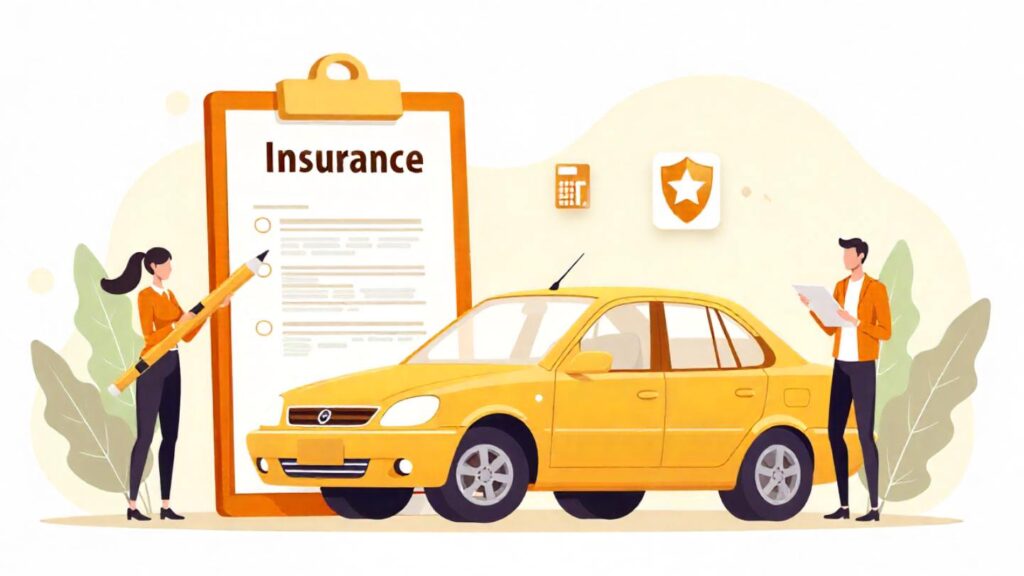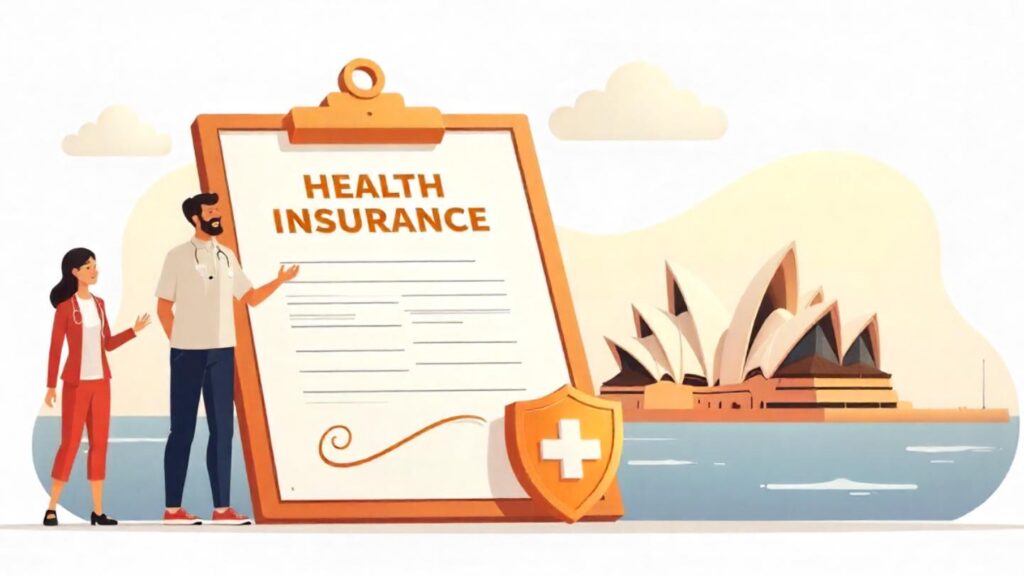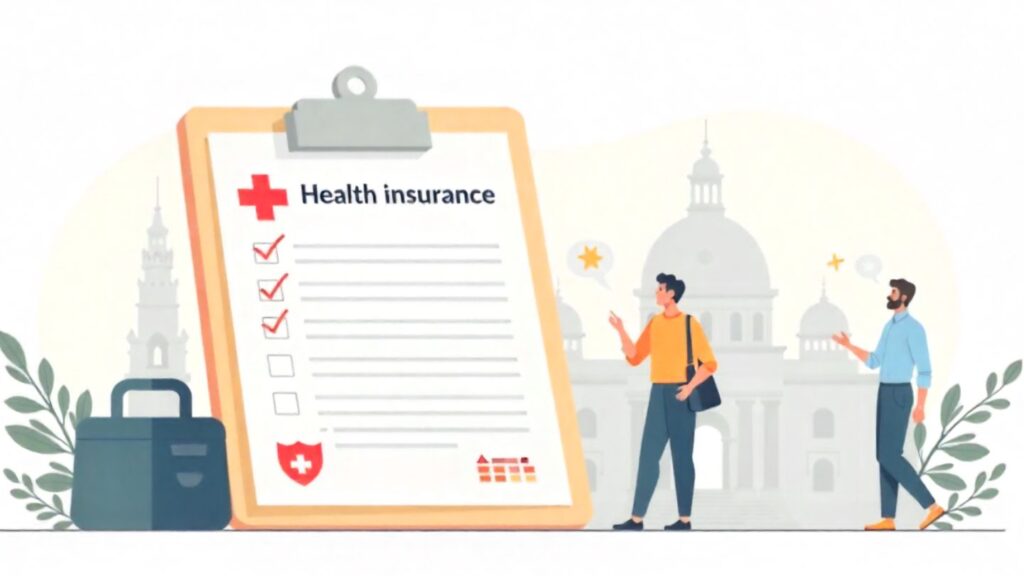Motor insurance in Australia is essential for every driver. It protects you financially if you cause an accident, suffer theft, or experience damage to your vehicle. Without proper insurance, you risk costly out-of-pocket expenses and legal penalties.
Legally, all drivers must have at least Compulsory Third Party (CTP) insurance to register and drive their vehicles. Beyond legal requirements, motor insurance provides peace of mind and safeguards your finances against unexpected events on the road.
This article covers the main types of motor insurance in Australia, how much it costs, differences between states, tips for choosing the right policy, and ways to save money on premiums.
What Is Motor Insurance in Australia?
Motor insurance in Australia is a type of coverage that protects drivers financially if their vehicle is involved in an accident, stolen, or damaged. It helps cover the costs of repairs, medical expenses, and liability for damage caused to others.
There are two main types of motor insurance: compulsory and optional. Compulsory insurance, known as Compulsory Third Party (CTP), is required by law and covers injury to other people in accidents. Optional policies, such as comprehensive insurance, offer broader protection including damage to your own vehicle.
Having motor insurance safeguards your finances by reducing the risk of paying large expenses after an accident. It provides peace of mind while driving on Australian roads.
Types of Motor Insurance Available in Australia
When choosing motor insurance in Australia, it is important to understand the different types of coverage available. Each type offers different levels of protection and meets different needs. Here is an overview of the main categories:
Compulsory Third Party (CTP) Insurance
CTP insurance is mandatory for all registered vehicles in Australia. It covers injuries caused to other people in an accident where you are at fault. This includes compensation for medical expenses, rehabilitation, and loss of income.
However, CTP insurance does not cover damage to property or vehicles, including your own. It is designed primarily to protect other road users and pedestrians. The requirement for CTP insurance ensures that everyone injured on the road can receive financial support without delay.
Third Party Property Damage Insurance
This type of insurance covers the cost of damage you cause to other people’s property or vehicles. If you are involved in an accident that damages another car or a fence, for example, third party property damage insurance will pay for repairs or replacement.
However, it does not cover any damage to your own vehicle or injuries sustained by you or your passengers. This coverage is often chosen by drivers of older cars or those who want basic protection at a lower premium.
Third Party Fire and Theft Insurance
Third party fire and theft insurance builds on third party property damage coverage by adding protection for your own vehicle against fire damage and theft. This means that if your car is stolen or damaged by fire, the insurer will cover the loss or repairs.
It also still covers damage to other people’s property if you cause an accident. This option provides more comprehensive protection than basic third party insurance while remaining more affordable than full comprehensive policies.
Comprehensive Motor Insurance
Comprehensive insurance offers the widest level of coverage for motor vehicles. It protects your own car against damage from accidents, theft, fire, weather events such as storms or hail, and vandalism.
Additionally, it covers damage to third party vehicles and property. Comprehensive insurance may also include optional extras like roadside assistance, windscreen repair, and rental car cover while your vehicle is being repaired.
This type of insurance generally costs more but offers peace of mind and financial security in many situations. It is usually recommended for newer or higher-value vehicles.
Comparison Table of Motor Insurance Types in Australia
| Type | What It Covers | What It Does Not Cover | Typical Use Case |
|---|---|---|---|
| Compulsory Third Party (CTP) | Injuries to other people | Property damage, own vehicle damage | Mandatory legal minimum, injury protection |
| Third Party Property Damage | Damage to other vehicles and property | Own vehicle damage, fire, theft | Basic protection for damage caused to others |
| Third Party Fire and Theft | Third party damage, own vehicle fire and theft | Accident damage to own vehicle | Affordable plus protection against theft/fire |
| Comprehensive | Own vehicle and third party damage, theft, fire, weather events | Typically excludes wear and tear | Best for newer or valuable cars, broad protection |
State and Territory Differences in Motor Insurance
Motor insurance requirements, especially Compulsory Third Party (CTP) insurance, vary across Australia’s states and territories. Understanding these differences is important for all drivers, as the process for obtaining and managing CTP insurance depends on where you live or register your vehicle.
How CTP Insurance Is Regulated Across States and Territories
Each state and territory sets its own rules for CTP insurance, including who provides the coverage, how it is purchased, and whether it is included in your vehicle registration fees or needs to be bought separately.
While all drivers must have CTP insurance to legally drive on public roads, the specific arrangements can differ significantly.
Key Differences Between States
- New South Wales (NSW): Drivers must buy CTP insurance separately before registering their vehicle. This insurance is commonly known as a “Green Slip.” You can purchase a Green Slip from various licensed insurers, giving you some choice in price and coverage options.
- Queensland (QLD) and South Australia (SA): CTP insurance is included in the vehicle registration fee. Drivers do not need to buy it separately, which can simplify the registration process.
- Victoria (VIC), Western Australia (WA), Tasmania (TAS), Northern Territory (NT), and Australian Capital Territory (ACT): In these regions, CTP insurance is managed by government-run insurers and is typically included as part of the registration process. This system provides a standardized coverage approach.
Why Knowing Your State’s Rules Matters
Being aware of how CTP insurance works in your state or territory helps you avoid legal issues and ensures you are properly covered. For example, if you live in NSW but forget to purchase a Green Slip before registration, your vehicle will not be legally registered, and you risk fines or penalties.
In contrast, drivers in Queensland or South Australia benefit from automatic inclusion of CTP in registration fees, reducing administrative steps.
Additionally, the cost and claims process may vary by location. Knowing your state’s rules allows you to make informed choices, compare insurers if applicable, and understand what protections you have in case of an accident.
How Much Does Motor Insurance Cost in Australia?
The cost of motor insurance in Australia varies widely depending on several important factors. Understanding what influences your premium helps you find the best policy for your budget and coverage needs.
Factors Influencing Motor Insurance Premiums
Several elements affect how much you will pay for motor insurance:
- Driver’s Age and Experience: Younger and less experienced drivers usually face higher premiums because they are statistically more likely to be involved in accidents. Conversely, older, more experienced drivers often benefit from lower rates.
- Type and Age of Vehicle: Newer and more expensive cars typically cost more to insure, especially with comprehensive coverage. High-performance or modified vehicles can also attract higher premiums due to increased risk.
- Location: Where you live affects your premium. Urban areas often have higher insurance costs because of increased traffic, theft rates, and accident risk. Rural areas may have lower premiums, but this can vary depending on local factors.
- Claims History: Drivers with previous claims or traffic violations may face higher premiums as insurers consider them higher risk. Maintaining a clean driving record can reduce costs over time.
- Usage: How often and for what purpose you use your vehicle matters. Frequent drivers or those using their car for business may pay more than those who drive occasionally.
Typical Price Ranges
Motor insurance costs in Australia can range significantly depending on coverage type and personal factors. For example:
- Compulsory Third Party (CTP) insurance can range from about $400 to $800 per year depending on the state.
- Third party property damage or fire and theft policies may start around $300 and go up depending on the vehicle and location.
- Comprehensive insurance policies usually start around $600 annually and can rise to over $1500 for high-value or high-risk vehicles.
These figures are indicative and can vary greatly between insurers and drivers.
How Excess Affects Your Premium
Excess is the amount you agree to pay out of pocket when making a claim. Choosing a higher excess generally lowers your insurance premium because you share more risk. However, you should choose an excess amount you can afford to pay if an accident happens.
For example, increasing your excess from $300 to $700 might reduce your premium by 10 to 20 percent. It is important to balance lower premiums with manageable excess costs to avoid financial strain after a claim.
How to Choose the Right Motor Insurance Policy
Selecting the right motor insurance policy involves careful consideration of several key factors. Making an informed choice helps ensure you get the protection you need without paying for unnecessary coverage.
Assess Your Vehicle’s Value and Usage
Start by evaluating the value of your vehicle. If your car is older or has a low market value, a basic third party policy might provide sufficient protection. For newer or more expensive cars, comprehensive insurance offers greater security by covering a wider range of risks including theft, fire, and accidental damage.
Next, consider how often and for what purposes you use your vehicle. Daily commuters or drivers who travel long distances may benefit from more extensive coverage due to increased exposure to risk. On the other hand, occasional drivers might choose policies with limited coverage to reduce costs.
Consider Your Driving Habits and Risk Profile
Your personal driving habits and history play a major role in selecting the right policy. If you have a clean driving record and rarely make claims, some insurers may offer discounts or lower premiums.
Conversely, if you have a history of accidents or traffic violations, it is important to choose a policy that provides adequate coverage even if premiums are higher.
Also, think about who else might drive your vehicle. If multiple drivers use the car, you may need to declare this to your insurer, as it can impact your risk profile and premium.
Understand Optional Extras
Many insurance providers offer optional extras that add convenience and additional protection. Common extras include roadside assistance, which can be helpful in emergencies, rental car cover that pays for a temporary vehicle while yours is being repaired, and windscreen protection for quick repair or replacement.
Evaluate these extras based on your lifestyle and preferences. If you frequently drive in remote areas, roadside assistance could be very useful. For urban drivers, windscreen protection may provide peace of mind against common hazards.
Balance Cost and Coverage Needs
Finding the right balance between premium cost and coverage is essential. While it might be tempting to choose the cheapest policy, low-cost insurance may not provide sufficient protection when you need it most. Consider your financial situation and risk tolerance to select coverage that offers good value.
Review the excess amounts carefully as higher excess can lower premiums but means higher out-of-pocket costs during claims. Also, read policy documents to understand what is covered and any exclusions that may apply.
Tips to Save Money on Motor Insurance in Australia
Saving money on motor insurance does not mean compromising on important coverage. With careful planning and smart choices, you can reduce your premiums while maintaining adequate protection. Here are several effective strategies to help you save.
Compare Multiple Quotes Online
One of the best ways to find affordable motor insurance is by comparing quotes from different providers. Insurers may offer varying prices and benefits for similar coverage, so shopping around allows you to identify the best deal.
Use online comparison tools to quickly review multiple policies, but make sure to check what each policy includes and excludes before deciding.
Bundle with Other Insurance Products
Many insurance companies offer discounts if you bundle your motor insurance with other policies, such as home, contents, or travel insurance. Bundling can lead to significant savings and simplify managing your insurance needs through a single provider.
Increase Your Excess Carefully
Choosing a higher excess can lower your premium because you agree to pay more out of pocket in the event of a claim. However, it is important to select an excess amount you can afford to pay without difficulty.
Carefully balancing your excess and premium ensures that you save money on insurance without risking financial stress after an accident.
Maintain a Clean Driving Record
Insurers reward safe driving. By avoiding accidents and traffic violations, you can reduce your risk profile and qualify for lower premiums. Maintaining a clean driving record over several years can also help you accumulate no-claim bonuses, further decreasing your insurance costs.
Take Advantage of Discounts and No-Claim Bonuses
Many insurers provide discounts for certain groups, such as low-mileage drivers, members of specific organizations, or drivers who complete defensive driving courses.
Additionally, no-claim bonuses reward you for not making claims by reducing your premiums each year. Always ask your insurer about available discounts and how you can qualify for them.
What to Do When Making a Claim
Knowing how to make a motor insurance claim properly can help the process go smoothly and ensure you receive the compensation you need after an accident or theft.
Step-by-Step Guide to Reporting an Accident or Theft
- Ensure Safety First: If you are involved in an accident, check that everyone is safe. Call emergency services if anyone is injured.
- Gather Information: Exchange contact and insurance details with other parties involved. Take photos of the damage, accident scene, and any relevant road conditions.
- Report to Police if Necessary: In cases of theft, vandalism, or accidents with significant damage or injury, notify the police and obtain a report number.
- Contact Your Insurer Promptly: Report the incident to your insurance provider as soon as possible. Many insurers offer 24/7 claims hotlines or online claim submission.
- Provide Required Details: Be ready to share your policy number, the date and time of the incident, a description of what happened, and any supporting documents such as photos or police reports.
Information You Need to Provide
When making a claim, insurers typically require:
- Your personal details and policy information
- Details about the accident or theft, including time, location, and circumstances
- Contact and insurance details of other parties involved (if applicable)
- Police report number (if reported)
- Evidence such as photographs or witness statements
Providing complete and accurate information helps the insurer assess your claim quickly.
How Claims Can Impact Your Premium
Making a claim may affect your future insurance premiums. After a claim, insurers might increase your premium to reflect the higher risk. The size and type of claim often influence the amount of increase. For example, small claims for minor damage may have less impact than large or frequent claims.
To minimize premium increases, consider paying for minor repairs out of pocket if financially feasible. Also, maintaining a good driving record after a claim can help you qualify for discounts over time.
Conclusion
Having the right motor insurance is essential for protecting yourself, your passengers, and other road users from financial loss after an accident or theft. It not only meets legal requirements but also provides peace of mind when unexpected events occur.
Because insurance needs can change over time, it is important to review your policy regularly. Check that your coverage still fits your vehicle’s value, driving habits, and budget. Staying informed helps you avoid gaps in protection and ensures you only pay for what you need.
Finally, take time to compare insurance options from different providers before renewing your policy. By understanding the types of coverage, costs, and benefits available, you can make smart decisions that balance safety and affordability.
Regularly reviewing and comparing your motor insurance puts you in control and helps you drive confidently on Australian roads.
Frequently Asked Questions (FAQs)
Is CTP insurance included in my registration?
The inclusion of Compulsory Third Party (CTP) insurance in your vehicle registration depends on your state or territory. For example, in Queensland and South Australia, CTP is automatically included in the registration fee. However, in New South Wales, you must purchase CTP separately before registering your vehicle, commonly called a Green Slip. Other regions generally include CTP in registration but manage it through government insurers. Always check the specific rules in your area to ensure compliance.
Can I drive without motor insurance in Australia?
No, driving without motor insurance is illegal in Australia. You must have at least CTP insurance to register and drive your vehicle legally. Driving without insurance can lead to fines, license suspension, and personal liability for any damages or injuries you cause. Proof of insurance is typically required during vehicle registration and may be requested by authorities.
What happens if I cause an accident and don’t have insurance?
If you cause an accident without insurance, you are personally responsible for paying any damages, medical costs, or legal claims resulting from the accident. This financial burden can be significant and may lead to legal action. Additionally, driving without the required insurance can result in fines, penalties, and loss of driving privileges.
How do I find the best insurance provider?
Finding the best insurance provider involves comparing multiple quotes and coverage options. Consider factors such as premium costs, excess amounts, policy inclusions, and customer service quality. Online comparison tools can simplify this process. Reading customer reviews and checking insurer reputations can also help you select a provider that offers the best value and reliable claims support.



